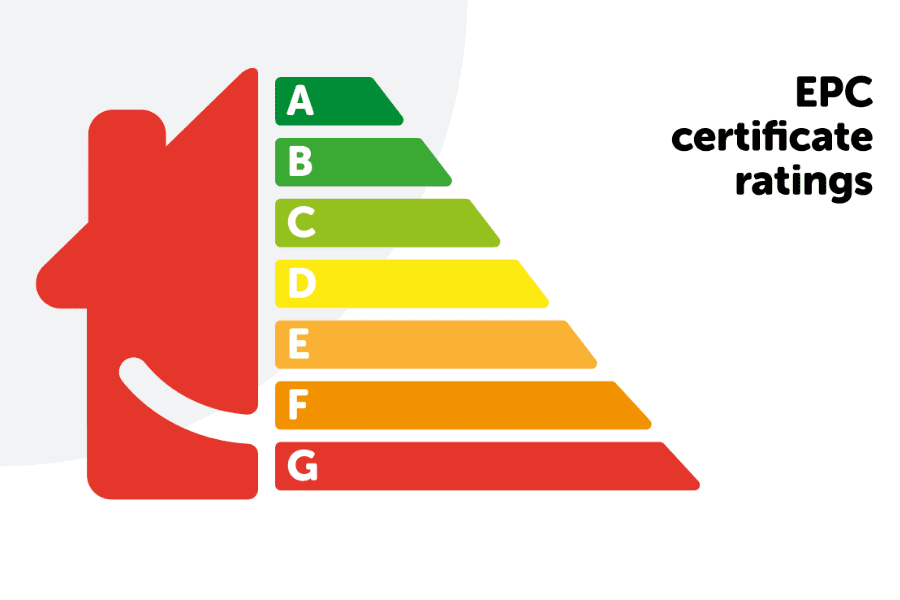When it comes to saving on energy bills and making your home more eco-friendly, two terms you’ll hear often in the UK are EPC Rating and ECO4. But what do they really mean? And why do they matter for homeowners and tenants?
In this guide, we’ll break down:
- What EPC ratings are
- How the ECO4 scheme works
- Why your EPC score is crucial for grant eligibility
- How to improve your EPC rating for free or at low cost
Whether you’re a homeowner, landlord, or tenant, understanding the link between EPC ratings and ECO4 could mean thousands of pounds in free energy-saving upgrades for your property.
Chapter 1 – Understanding EPC Ratings
An EPC (Energy Performance Certificate) measures the energy efficiency of a property. It’s a legal requirement in the UK for most homes when they are built, sold, or rented.
EPC Ratings Range:
- A – Most efficient (cheapest to run)
- G – Least efficient (most expensive to run)
The rating is based on:
- Insulation quality
- Heating system efficiency
- Lighting energy use
- Renewable energy sources (like solar panels)
Chapter 2 – Why EPC Matters for ECO4
The ECO4 Scheme is the UK government’s program to help low-income households reduce energy costs and carbon emissions.
Key Point:
Your EPC rating determines if you qualify and what improvements you can get under ECO4.
For example:
- If your home has an EPC rating of D, E, F, or G, you’re more likely to be eligible.
- If you’re in band A, B, or C, you may not qualify for major upgrades (since your home is already efficient).
Chapter 3 – ECO4 Eligibility Criteria
To be eligible for ECO4, you need to meet certain conditions:
- Low income or receiving benefits (e.g., Universal Credit, Pension Credit, Child Tax Credit)
- Low EPC rating (D–G)
- Property ownership or rental with permission from the landlord
- Not having recently received similar upgrades
Benefits for qualifying households:
- Free loft insulation
- Cavity wall insulation
- Room-in-roof insulation
- New, energy-efficient boiler
- Air source heat pumps
Chapter 4 – How to Check Your EPC Rating
- Visit: gov.uk/find-energy-certificate
- Enter your postcode
- View your home’s rating and recommendations
Chapter 5 – How to Improve Your EPC Score
If your EPC rating is low, you can take these steps:
- Insulation: Install loft, wall, and floor insulation
- Efficient Heating: Upgrade to a modern boiler or heat pump
- Renewable Energy: Consider solar panels or biomass boilers
- LED Lighting: Replace old bulbs with LEDs
- Smart Heating Controls: Use thermostats and timers
Chapter 6 – How EPC and ECO4 Work Together
Think of EPC as your energy efficiency report card. ECO4 is the government’s funding program that helps you improve that score.
If your EPC shows poor efficiency, ECO4 provides the funding to fix it — meaning lower bills, warmer homes, and reduced carbon footprint.
Chapter 7 – Common Myths
❌ Myth: “You need to pay for ECO4 upgrades.”
✅ Fact: Most upgrades are fully funded for eligible households.
❌ Myth: “Only homeowners can apply.”
✅ Fact: Tenants with landlord permission can also apply.
Chapter 8 – The Process of Getting ECO4 Help
- Check EPC
- Find an ECO4 provider
- Eligibility check
- Survey of your home
- Free installation
Chapter 9 – Long-Term Benefits
- Lower heating bills (average saving: £300–£900/year)
- Increased property value
- Better indoor comfort
- Reduced carbon emissions
- Potential for higher EPC rating, making your home more attractive to buyers/tenants
Chapter 10 – Conclusion
If you have a low EPC rating, you’re potentially missing out on free government support through ECO4. By checking your rating today, you can unlock funding for insulation, heating upgrades, and more.

Pingback: ECO4 Scheme for Low-Income Families – Save Money & Stay Warm in the UK - eco4homeimprovements.co.uk
Pingback: Driving Sustainable Change with GBIS Eco4 - eco4homeimprovements.co.uk